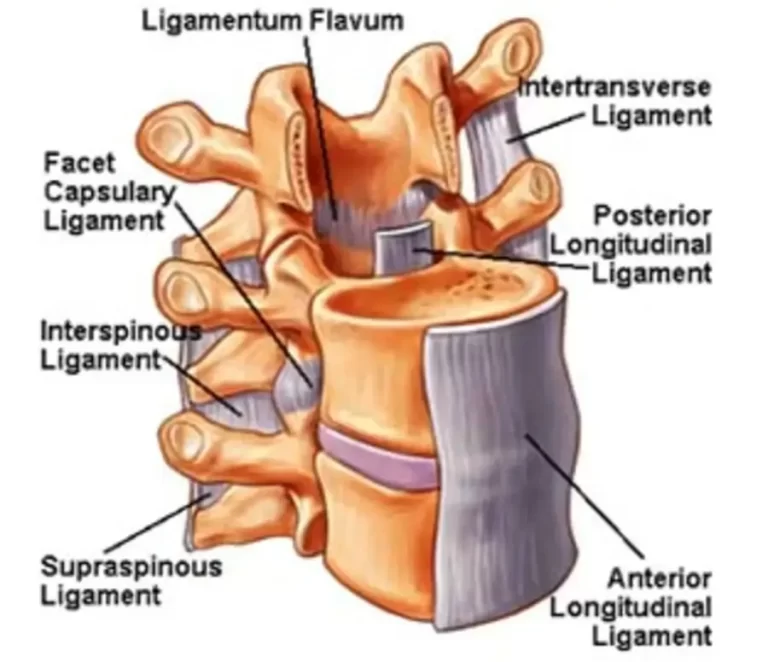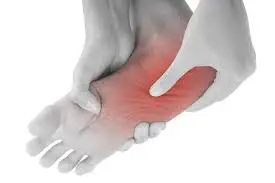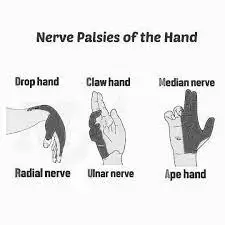Does Cervical Spondylosis Cause Dizziness?
Overview
Yes, cervical spondylosis can cause dizziness in some individuals. This condition, which involves age-related wear and tear of the cervical spine, may affect blood flow or nerve function, leading to balance issues and lightheadedness.
Wear and tear on your cervical spine is commonly referred to as “cervical spondylosis,” or arthritis of the neck. Cervical spondylosis cannot be healed, but doctors can stop it from getting worse.
Bony protuberances along the margins of bones (bone spurs) are one of the symptoms of osteoarthritis that appear as the disks dry up and shrink. Cervical spondylosis gets worse as people age. It is believed that 85% of those over 60 have cervical spondylosis. When symptoms start appearing, nonsurgical treatments are frequently effective.
Cervical spondylosis: what is it?
The usual term for wear and strain on your cervical spine is “cervical spondylosis.” The term “cervical” describes the seven stacked vertebrae in your neck. Spondylosis occurs when certain areas of your spine start to deteriorate. Cervical spondylosis cannot be healed, but doctors can stop it from getting worse.
Signs of Cervical Spondylosis
Cervical spondylosis does not always cause symptoms. In the case that symptoms are present, they may consist of:
- Inability to walk and lack of coordination
- Inability to control one’s stool or bladder
- Neck pain.
- Stiff neck.
- A bump or knot in your neck.
- Muscle spasms.
- A clicking, popping, or grinding sound when you move your neck.
- Dizziness.
- Headache.
Causes of Cervical Spondylosis
The most common cause is changes in your spine caused by aging. Medical diseases that could cause changes include:
- Dehydrated disks. The spinal disks of most people start to dry out and shrink by the time they are 40 years old. The vertebrae make greater bone-on-bone contact as the disks get smaller.
- Herniated disks. Additionally, the outside of the spinal disks develops cracks. On rare occasions, it may exert pressure on the spinal cord and nerve roots.
- Stiff ligaments. Tissue cords called ligaments join one bone to another. Neck flexibility may be reduced by age-related stiffness of the spinal ligaments.
Can Cervical Spondylosis Cause Dizziness?
The Impact of Cervical Spine Disorders on Balance:
Due to their effects on proprioception (the awareness of one’s body position), nerve function, and blood flow to the brain, cervical spine disorders, including arthritis, traumas, or disc abnormalities, can have a substantial impact on balance. Dizziness, unsteadiness, and trouble walking can result from conditions including cervical vertigo and cervical myelopathy.
Proprioception:
Numerous proprioceptors—nerve endings that educate the brain about the position and movement of the neck and head—are found in the cervical spine. These impulses can be interfered with by neck pain or dysfunction, which can impair balance and coordination.
Nerve Compression:
The spinal cord or nerve roots in the neck may be compressed by diseases such as disc herniations or cervical stenosis, which narrows the spinal canal. Balance and gait may be impacted by this compression as it may disrupt the nerve signals that travel from the brain to the legs and feet.
Cervical Vertigo (Cervicogenic Dizziness):
This kind of vertigo results from issues with the cervical spine, frequently caused by inflammation or trauma. Cervicogenic dizziness, another name for cervical vertigo, is a disorder that is characterized by spinning or dizziness that is caused by problems in the neck. In essence, it’s dizziness caused by a neck problem, and it frequently comes with neck pain. Head or neck motions can cause dizziness, which can also impair balance and focus.
Cervical Myelopathy:
Cervical myelopathy, which results from compression of the spinal cord in the neck, can cause symptoms like fine motor skills issues, walking difficulties, and loss of balance.
Vertebral Artery Compression:
The cervical vertebrae are traversed by the vertebral arteries, which provide blood to the brain. These arteries may be compressed or stretched by problems with the cervical spine, which would impact blood flow to the cerebellum, a part of the brain important for balance and coordination.
Numerous neurological conditions can result from vertebrobasilar insufficiency (VBI), which is reduced blood supply to the brain caused by involvement of the vertebral arteries. The cerebellum, brainstem, and occipital lobes are affected when the vertebral arteries, which provide blood to the rear of the brain, constrict or get clogged.
Role of cervical proprioception (neck sensory input) in maintaining balance
Cervical proprioception, the capacity to perceive the position and movement of the head and neck, is crucial for maintaining equilibrium. To give the brain information about spatial direction and enable coordinated head and body motions as well as effective posture control, it collaborates with the visual and vestibular systems.
In cervical spondylosis, dizziness is more likely to occur when neck movements compress blood vessels or nerves that supply the brain and inner ear, disrupting balance signals. This may be caused by cervical spondylosis, a degenerative condition of the neck that can irritate or compress the cervical nerve roots or vertebral arteries.
Symptoms of cervical vertigo
Cervical vertigo symptoms vary from person to person. They may include:
- Dizziness.
- A sensation of floating.
- Lightheadedness.
- Inability to coordinate or instability.
- Balance problems.
- Changes in posture.
- Problems related to the eyes include eye tiredness and rapid eye movements.
- Vomiting and nausea.
- Tightness or soreness in the neck.
- Headaches.
Cervical vertigo rarely causes you to feel as though you’re spinning, compared to other forms of the condition. Most people instead report feeling dizzy or “floating.” Cervical vertigo is occasionally mistaken for the symptoms of several vestibular (inner ear) disorders, such as:
- Vestibular neuritis.
- Labyrinthitis.
- Benign paroxysmal positional vertigo (BPPV).
- Acoustic neuroma.
Types of Dizziness Associated with Cervical Spondylosis
Different forms of dizziness can be caused by cervical spondylosis, a degenerative disorder of the neck. These include lightheadedness, presyncope (feeling faint), disequilibrium (lack of balance), and vertigo (spinning sensation). Uncoordinated movements, altered posture, blurred vision, and even nausea or vomiting are some possible symptoms.
Vertigo:
This particular form of dizziness makes you feel as though you or your surroundings are spinning, even when you are not.
Disequilibrium:
This describes a swaying sensation or a sense of unsteadiness or trouble sustaining balance, which can result in falls.
Presyncope:
This is the dizziness or fainting sensation that comes before a possible unconsciousness.
Lightheadedness:
This is a broad word describing feeling lightheaded or unstable without necessarily having vertigo’s spinning sensation.
How is the diagnosis of cervical spondylosis made?
They might look at your:
- Neck flexibility.
- Reflexes.
- Gait (how you walk).
Which tests are used to identify cervical spondylosis?
To obtain detailed images or photos of your spine and to assess the health of your skeletal muscles and nerves, your healthcare professional may perform the following tests. Tests could consist of:
- Magnetic resonance imaging (MRI).
- Magnetic resonance angiography (MRA).
- Spine X-rays.
- Vertebral Doppler ultrasound.
- Vertebral angiography.
- Computed tomography (CT) scan.
- Myelogram.
- Electromyography (EMG).
- Nerve conduction study.
Special test
Cervical torsion test for dizziness
 Cervical Torsion Test
Cervical Torsion Test
The patient should be positioned on a swivel chair with their hips and knees flexed to 90 degrees in order to do the test. By closing his eyes, the patient lowers afferent activity from the visual system. Following that, the patient is instructed to actively twist their trunk to one side for at least 45 degrees and up to 90 degrees, maintaining the posture for 30 seconds while the examiner fixes their head in a neutral position.
If the patient feels lightheadedness, tinnitus, headache, paresthesia, motion sickness or nausea, slurred speech, dizziness, visual problems, peculiar eye movements after opening the eyes after the test, or speech difficulty, the test is considered positive. Any of the four locations may cause these symptoms, or they may appear just after the test.
Treatment
A doctor will prescribe a course of treatment based on the particular underlying cause of cervical vertigo after ruling out other possible causes.
Symptom management, which involves taking one or more medications to balance out symptoms while medical professionals address the underlying problem, is typically another aspect of treatment. This can entail taking medications to relax the muscles and lessen pain, as well as medications to help with the dizziness.
The majority of physicians will also suggest physical therapy and posture training as ways to improve range of motion, strengthen muscles, and free up space in the neck. By alone, this could relieve localized pressure and lessen symptoms.
A treatment that reduces your symptoms is the finest kind. Conservative, noninvasive techniques are usually used by medical practitioners to treat cervical spondylosis. For instance, they might suggest:
- Physical treatment.
- Over-the-counter medications to ease pain.
- Several times during the day, apply heat or ice to your neck for 15 minutes.
- Brace or soft collar.
- Your doctor might suggest radiofrequency ablation or cervical epidural steroid injection if you have severe neck pain.
Your doctor might suggest spinal fusion surgery if these therapies are ineffective or if your illness is a side effect of cervical myelopathy or cervical radiculopathy.
Medications
These drugs could consist of:
- Neck tightness can be lessened by muscle relaxants.
- Medications that reduce pain.
- Medications that lessen vertigo.
Physical therapy
It is essential for managing cervicogenic dizziness, also referred to as cervical vertigo. Exercises for strengthening and increasing neck mobility, manual therapy, and vestibular rehabilitation are frequently used in combination for treatment.
To treat the residual vertigo and balance problems, your doctor might also suggest vestibular rehabilitation. Exercises to increase balance and lessen vertigo are the main goals of vestibular rehabilitation.
Vestibular rehabilitation
 Vestibular rehabilitation
Vestibular rehabilitation
- Neck movement control.
- Eye movement control.
- Balance retraining.
- Stretching and strengthening.
- Walking.
Advantages of vestibular rehabilitation therapy
Studies show vestibular rehabilitation therapy helps:
- Reduce your risk of falling.
- Improve your balance.
- Reduce your dizziness symptoms.
- Improve your ability to stabilize your vision.
- Increase your body strength.
Home Remedies
Some at-home strategies to control or lessen episodes of vertigo include:
- Recognize that you could lose your balance. If necessary, use a cane for balance when walking. Additionally, try not to move quickly or abruptly.
- Protect your house against falls. Area rugs and exposed electrical cords are examples of tripping hazards that should be removed. Make effective use of the lighting.
- When you feel lightheaded, immediately sit or lie down. If vertigo strikes, lie motionless in a darker room with your eyes closed.
- If you are prone to sudden dizziness, avoid operating heavy machinery or driving a car. Using these drugs excessively can worsen your symptoms.
- Get enough sleep, eat a balanced diet, drink plenty of water, and learn to cope with stress.
- If you have an upset stomach along with your dizziness, try taking an antihistamine medication. Purchase the over-the-counter varieties. Dimenhydrinate (Dramamine) and meclizine (Dramamine Less Drowsy) are two examples. These could put you to sleep. Antihistamines without this adverse effect, however, are less effective.
If sitting or lying down is not enough, please just close your eyes. Some people have vertigo, which is the sensation that the room is spinning even when they are sitting motionless. This condition may go away once they lie down and close their eyes. Maintaining proper hydration and eating a balanced diet can improve both physical and mental health. Additionally, some people may have fewer episodes of vertigo after stopping smoking or consuming less alcohol and/or caffeine.
Avoiding motions that could cause vertigo by keeping them steady and fluid. Avoid or change certain activities or motions that cause dizziness, such as standing up rapidly or tilting the head to one side.
Enhancing posture and/or biomechanics to lessen the strain on muscles, blood vessels, and nerves that may be causing dizziness and neck pain. Setting up an ergonomic workstation, getting up frequently to move about instead of sitting for extended periods, and setting reminders to check for proper posture—which is defined as having the head in a neutral position with the ears immediately above the shoulders when sitting or standing—are some examples of improvements.
Lowering stress, which has been linked to mild episodes of vertigo and neck pain. Getting enough sleep, exercising, and adopting stress-reduction strategies are a few suggestions. Learn stress management skills from a cognitive behavioral therapist if you struggle with depression, anxiety, or chronic pain.
It’s a good idea to maintain the house well-lit and clear of trip hazards like rugs or cluttered paths if nausea or vertigo becomes persistent or if dizzy episodes occur frequently. To stay balanced during an unexpected dizziness episode, some people may also find it helpful to use a cane or other assistive equipment.
Self-Management Tips for Cervical Vertigo
Ergonomic modifications, mild neck exercises, and lifestyle modifications can all help manage cervical vertigo. While mild neck motions like tilts and rotations might increase flexibility, better posture—sitting up straight and avoiding slouching—can lessen neck pain. Keeping hydrated, reducing stress, setting up an ergonomic workstation, and sleeping in a posture that promotes the natural curvature of the neck can all be beneficial.
Moreover, minimizing abrupt neck movements, strengthening core muscles, and using heat or cold therapy can also help reduce symptoms. However, for the finest cervical vertigo management strategy, it is imperative to speak with a healthcare professional.
What are the complications of cervical spondylosis?
Numerous issues may arise from cervical spondylosis, especially if the condition worsens or is not addressed. The following are possible side effects of cervical spondylosis:
- Nerve compression: Herniated discs or bone spurs in the cervical spine can compress adjacent spinal nerves, resulting in symptoms including tingling, pain, weakness, or numbness in the hands, fingers, or arms. Muscle weakness, loss of coordination, or trouble with fine motor abilities might result from severe nerve compression. The disorder known as cervical radiculopathy is caused by irritation or compression of a spinal nerve root in the neck, which causes pain, numbness, or weakness that travels down the arm and into the hand.
- Myelopathy: This condition, which is characterized by growing neurological deficits such as weakness, loss of bladder or bowel control, trouble walking, and coordination issues, can result from severe compression of the spinal cord in the cervical spine.
- Degenerative disc disease: Chronic neck pain, stiffness, and decreased mobility can result from spinal disc degeneration, which is worsened by cervical spondylosis. Surgery may be necessary in certain cases of degenerative disc disease to relieve symptoms and restore function.
- Spinal stenosis: This condition is caused by the cervical spine’s spinal canal narrowing, which is frequently caused by bone spurs or herniated discs. Compression of the spinal cord or nerve roots may arise from this illness, causing symptoms like pain, weakness, numbness, or trouble walking.
- Loss of neck function: As cervical spondylosis worsens, everyday activities and quality of life may be impacted by neck stiffness, pain, and decreased mobility. In severe situations, the neck may become immobile, and it may be difficult to turn or tilt the head to complete certain tasks.
Long-term spinal nerve compression or irritation can cause irreversible nerve injury, which can cause persistent pain, weakness, or sensory abnormalities in the affected areas.
Summary
Cervical vertigo is generally treatable and manageable. Although it may be feasible to manage symptoms and improve quality of life, people with severe neck degeneration may find it more difficult to receive treatment.
Cervical vertigo is difficult to diagnose. Before diagnosing cervical vertigo, clinicians must rule out several other dangerous disorders. To identify and address the underlying problem, anyone who experiences symptoms like neck pain and lightheadedness after twisting their neck should consult their physician.
FAQs
How do I determine whether my neck is the cause of my vertigo?
Cervicogenic dizziness, also known as cervical vertigo, is the term used to describe dizziness that is associated with movement or neck pain. The defining feature of this type of dizziness is a feeling of disorientation caused by neck movement or a neck injury. Some neck motions cause vertigo or lightheadedness. Cervical vertigo is unlikely to be the cause of dizziness if the person has either neck pain or movement.
Does spondylitis cause dizziness?
It’s true that vertigo, or lightheadedness, might be a sign of ankylosing spondylitis (AS). Associated with inflammation, AS mostly affects the spine and other joints, but it can also cause inflammation in other parts of the body, including the inner ear. Dizziness can result from vertigo, which is caused by inflammation or other abnormalities in the brain or inner ear that interfere with the impulses that regulate balance.
Which cervical spondylosis symptoms are the worst?
Severe neck and arm pain, numbness or paralysis in the arms and hands, trouble walking or balancing, and loss of bladder or bowel control are some of the most severe symptoms of cervical spondylosis. These symptoms arise when degenerative abnormalities in the neck compress the spinal cord or nerve roots.
How can I prevent spondylitis-related vertigo?
Vertigo with Ankylosing Spondylitis: Treatments may lessen vertigo and dizziness while also improving your balance. Physical therapy is a key component of vertigo treatment. This includes gait training, balance exercises, and activities made especially to lessen vertigo.
Why is dizziness a symptom of cervical spondylosis?
Cervical vertigo or cervicogenic dizziness are terms used to describe the various ways in which cervical spondylosis, or arthritis of the neck, can induce dizziness. Bone spurs, spinal canal narrowing, and compression of blood vessels or nerves can result from the deterioration of the neck’s joints and vertebrae. This can cause dizziness or problems with balance by interfering with the messages the neck delivers to the brain regarding its position or by lowering blood supply to the brain.
How may cervical dizziness be prevented?
Physical therapy, lifestyle changes, and, in certain situations, medication can all be used to control and lessen cervical dizziness, also referred to as cervicogenic dizziness. While lifestyle modifications include changing workstations, taking breaks, and maintaining proper posture, physical therapy concentrates on exercises to enhance neck mobility, posture, and balance. Prescription drugs may be used to treat symptoms of pain or lightheadedness.
When it comes to cervical spondylosis, what should be avoided?
Avoiding neck-straining activities such as heavy lifting, prolonged poor posture, and repetitive neck movements is essential for those with cervical spondylosis. Additionally, to prevent further neck injuries, refrain from abrupt, violent neck motions like jerking or twisting. Avoid smoking as well because it might worsen disc degeneration by decreasing blood supply to the spine.
What is the dizzy ENT test?
Patients with potential problems on both sides of the vestibular system undergo a rotary chair test. Your reaction to various head movements is measured by the test. During the assessment, you will sit on a digital chair with electrodes placed near your eyes to capture your eye movements.
Reference
- Cervical spondylosis. (2025b, June 2). Cleveland Clinic. https://my.clevelandclinic.org/health/diseases/17685-cervical-spondylosis
- Cervical spondylosis – Symptoms & causes – Mayo Clinic. (2023, December 20). Mayo Clinic. https://www.mayoclinic.org/diseases-conditions/cervical-spondylosis/symptoms-causes/syc-20370787
- Dua, S. (2021, May 1). An Introductory Guide to Cervical Spondylosis. Max Healthcare. https://www.maxhealthcare.in/blogs/cervical-spondylosis-symptoms-causes-risk-factors
- Cervical vertigo. (2025b, June 2). Cleveland Clinic. https://my.clevelandclinic.org/health/diseases/23174-cervical-vertigo







